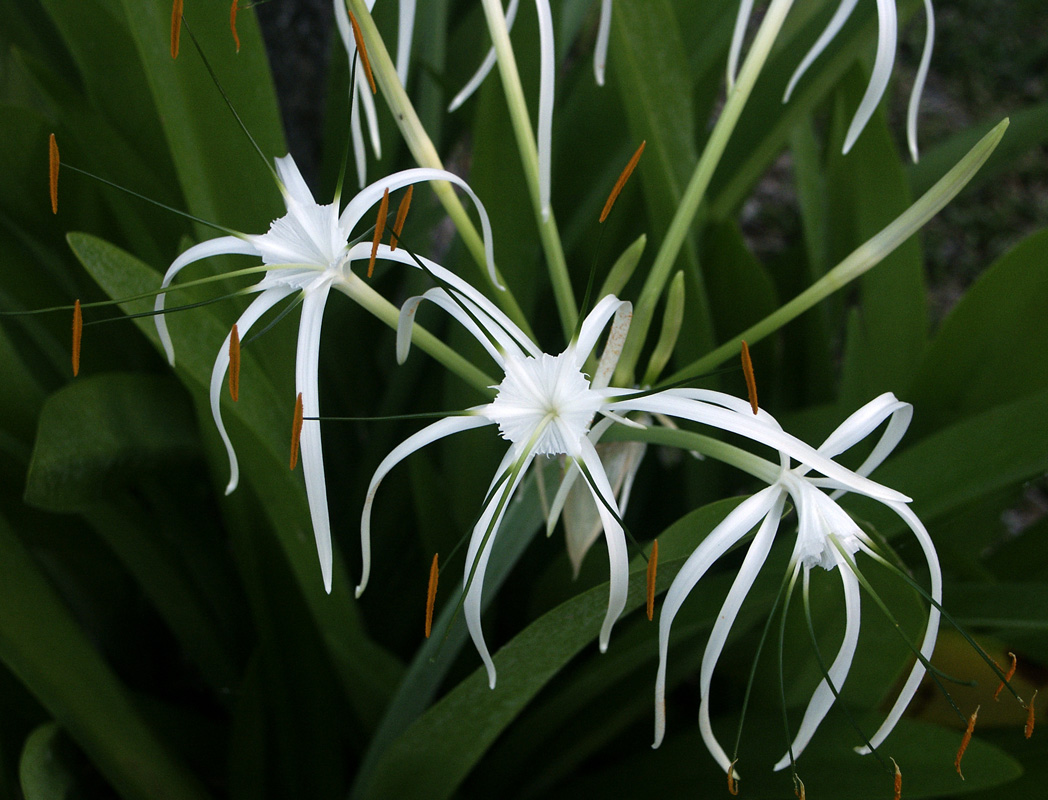Mangrove spiderlily
Pictured above: Mangrove spiderlily (Hymenocallis latifolia) by Scott Zona (CC BY-NC 2.0). Click on terms for botanical definitions. View post as a PDF
Also known as Perfumed spiderlily, Mangrove spiderlily is found in mangrove swamps and coastal swales and dunes, and along coastal hammock edges in Central and South Florida. Its showy sweet-scented flowers bloom spring through fall and are primarily pollinated by moths.
Mangrove spiderlily’s large fragrant flowers are solitary and terminal. Each has six linear white to pale green tepals that radiate almost horizontally from beneath a thin white membranous “cup.” Attached to the cup are six long, prominent stamens with noticeable reddish-orange anthers. Flower scapes may produce up to 15 flowers at a time. Leaves are basal, linear or straplike and arching with entire margins. They may be up to 3 feet in length and emerge from an onion-like bulb. Fruits are large (up to ¾-inch in diameter) green ovoid capsules.
The genus Hymenocallis is from the Greek hymen, meaning “membrane,” and callis, meaning “beautiful.” The species epithet latifolia is Latin for “broad leaf.”
Family: Amaryllidaceae (Amaryllis family)
Native range: Central and South Florida coastal counties, the Keys, Franklin County
To see where natural populations of Mangrove spiderlily have been vouchered, visit florida.plantatlas.usf.edu.
Hardiness: Zones 9A–11
Soil: Moist to saturated sandy, loamy or clay soils
Exposure: Full sun to partial shade
Growth habit: 1–3’+ tall with broader spread
Propagation: Seed, division
Garden tips: Mangrove spiderlily is the most widely cultivated of Florida’s 14 native Hymenocallis species. It is best suited for moist wildflower gardens where it may require little maintenance once established. Use as an accent or specimen plant in a small garden or plant en masse for an interesting evergreen border.
Plants are occasionally available from nurseries that specialize in Florida native plants. Visit www.PlantRealFlorida.org to find a nursery in your area.
For information on other Hymenocallis species see:

